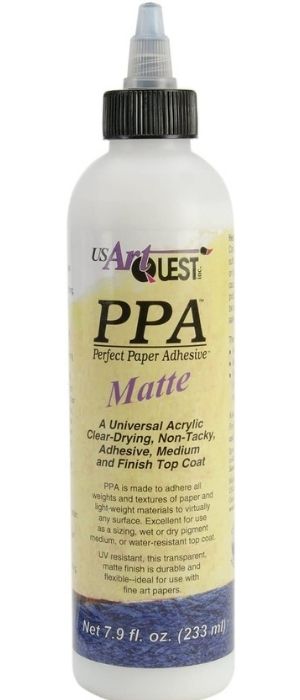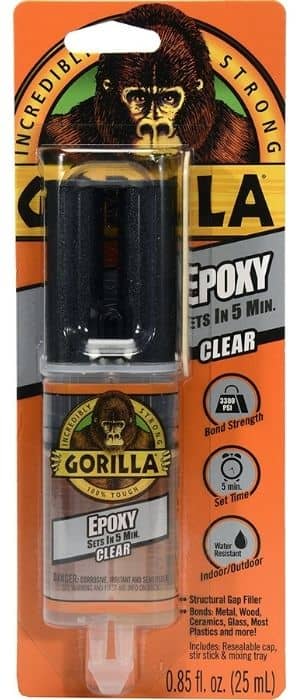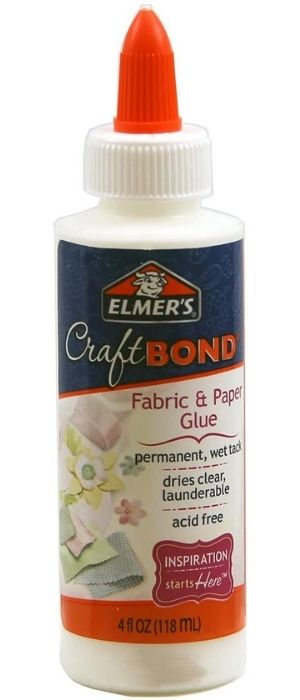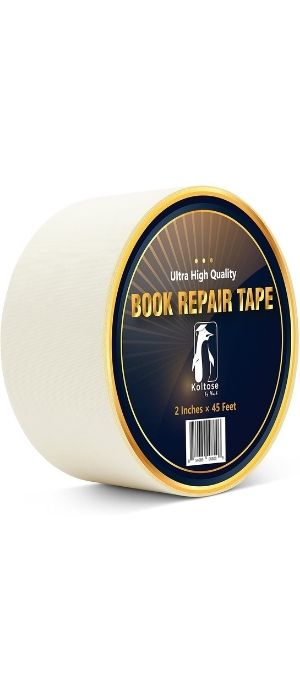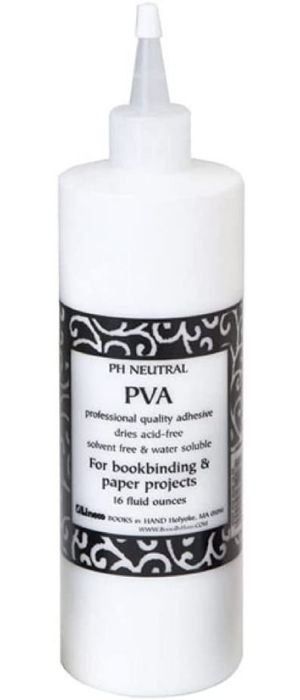Any bookbinding expert knows the importance of glue. The best adhesive for bookbinding will help you to firmly bind the book to make them long-lasting. Moreover, it will prevent your book pages from being damaged.
However, there are multiple types of glue used in bookbinding, and not all of them are highly qualified. As a result, beginners may struggle to select the perfect adhesive.
But, no need to worry! We can assist you to pick the right glue for you. After doing a lot of research and homework, we listed down the 5 best bookbinding glue that will be perfect for your project. We also described their key features, pros, and cons.
Check out these five glues and pick one based on your budget and project. Without any delay, let’s get started!
Table of Contents
Quick Review
Among our 5 best glue for bookbinding, Lineco Books by Hand glue is best for quality. It has more than 1400+ ratings and includes all features you would like to get from any bookbinding glue, such as acid-free, waterproof, skin-friendly, smooth drying, etc. Moreover, it can be diluted with water and works on various materials. Using this non-toxic glue, you can restore any type or size of the book.
We will also discuss some other excellent adhesives. Like, Gorilla glue, which is best for multiple materials and is super easy to apply. We also discussed Elmer’s craft glue, which is famous for fabric and papercrafts. Moreover, we have Koltose tape, which is suitable for book repair. And finally, we reviewed Perfect Paper adhesive, which can be used for paper crafting.
The 5 Best Glue For Bookbinding
What Kind of Bookbinding Glue Is Best?
Generally, a non-toxic, acid-free glue will be the ideal bookbinding glue. Because non-toxic glue might be suitable for your regular usage. Acid-free bookbinding glue doesn’t turn the pages yellow, and the paper lasts longer. These kinds of adhesives are also good for the environment.
Moreover, for a better experience, you should get glue that dries clear. As a result, if the glue gets on the book cover, it will be less likely to be noticed after drying. This type of glue doesn’t discolor any material in the book.
Bookbinding glue that dries flexible and allows opening or flipping the book quickly. So, it gets easier to write and sketch in the book after binding.
1. Lineco Books by Hand pH Neutral Adhesive – Best For Quality
Lineco Books by Hand is one of the best glues for your bookbinding projects. This glue is quite popular because of its satisfactory performance and the Lineco brand’s outstanding quality control.
This acid-free glue is made with safe chemicals and a PH balance that keeps your pages looking new for a long time without yellowing or degradation. This PVA glue bookbinding dries transparently and is flexible enough. You can use the book after 3-4 hours. As a consequence, you’ll have enough time to realign and adjust the edges.
It is packaged in a handy bottle with a fine pouring tip. Moreover, a single bottle contains 16 oz of glue, which is enough for plenty of books. Because, you need to apply a very thin coat for the strongest bond.

Highlighted Features
- It takes around 48 hours to completely dry.
- You can dilute it with water and ideal for various uses.
- This glue dries smooth and flexible that allows easy page flipping.
- Thin consistency makes the application a piece of cake.
Pros
- Archival glue and water-resistant.
- Skin-friendly so no skin itching or irritation.
- It does not become crumbly and rupture after drying.
- It can restore any book.
Cons
- It does not contain any cap or nozzle.
- Slightly costly than other glues.
Why will you like this product?
If you have any allergy and itching problems for getting in touch with glue, then it is the best match for you. Because it is made with completely skin friendly ingredients.
2. Gorilla 2 Part Epoxy Glue – Best For Versatility
Our next pick is Gorilla 2-part Epoxy glue. Gorilla is one of the most popular brand names in the glue industry. Gorilla Epoxy glue is compatible with most materials, including paper, wood, glass, ceramic, metal, and cardboard.
Gorilla glue for bookbinding is durable and provides a robust and quick binding. You can simply finish the bookbinding job with it. This glue includes a syringe that contains 2 parts and distributes both evenly. This syringe is simple to use and does not twist or stick to your hands when applying in books.
Furthermore, gorilla bookbinding glue dries in about 5 minutes. You can still make final adjustments during drying.

Highlighted Features
- Useable for both new books and damaged book repairing task.
- Excellently fill up the multiple surfaces gap to join them.
- Comes in 25 millimetres tube.
- Easy cleaning advantage for too much usage.
- Requires 5 minutes to set up on paper.
Pros
- Solvent resistance.
- Provides repositioning time.
- Separate barrels of resin and hardener.
- The syringe ejects the proper quantity.
Cons
- It’s hard to apply the exact amount of glue for newbie users.
- Dries with an unpleasant yellowish color.
Why will you like this product?
It is applicable in multiple surfaces including paper, wood, and ceramic. So it will be the right choice for your versatile purposes.
3. Elmer’s E431 Craft Bond Fabric and Paper Glue – Best for Budget
This multicolor glue is best for paper and fabric crafts. It is pretty effective on these two materials and skin-friendly. Its adhesive is powerful and resilient, although it doesn’t need lots of time to dry. It also allows you to complete the final attachment during drying.
In addition, it features a fine and pointed tip that allows you to apply the proper amount of glues by adjusting with force. When you compare it to other 4-ounce bottle glues, you will pick it at a relatively reasonable price. You can also successfully bind dozens of books with 4 ounces of glue.
Read More Related post: Elmers Carpenters Wood Glue Review

Highlighted Features
- No colored marks on paper or cardboard.
- Waterproof adhesive.
- The cap fits firmly to prevent the glue from drying out after usage.
- Creates strong bonds in no time.
Pros
- Water-resistant and quick dry.
- Soap and water will clear up wet glue.
- Easy application to save time.
- Creates Permanent bonds for long-lasting use.
Cons
- You get an annoying odor when using the glue.
- Not so flexible for books.
Why will you like this product?
You can use it for home decoration, making ornaments or gift cards, arts and crafts projects besides binding books. It is an absolutely all-round performer for your DIY job.
4. Koltose Bookbinding Tape – Best for Book Repairing
Koltose by Mash bookbinding tape is also an excellent alternative for your bookbinding project. This tape also has a low price tag attached to it. This bookbinding tape is composed of ultra-fine cloth. The cloth’s smooth surface does not affect the book’s appearance. Using this tape, you can easily attach the cover to the reader without mixing any glue formulas.
Besides, this tape’s outstanding adhesive quality will make your book look brand new. It securely attaches cardboard to paper and several other materials. On a positive note, you can use glue on high temperatures and humidity areas because it has little effect.

Highlighted Features
- This tape doesn’t create clutter.
- Ultra-thin design ensures long time book binding.
- Removable paper baking to reduce tape waste.
- Comes in a bundle of 2 inches and 45 feet size .
- It creates permanent bonds.
Pros
- Easy to use and saves your valuable time.
- For better mixing, it’s completely white and semi-transparent.
- Extra thin, durable, and long-lasting.
- Money-back plus guarantee.
Cons
- You can’t write on the tap.
- After getting attached, the tape will not come off.
Why will you like this product?
Koltose offers you a 100% money back guarantee with the tape without asking any questions about its fault. So you can realize how confident the company is about the tape’s quality. It will be the perfect pick as a glue alternative.
5. Perfect Paper Adhesive – Best For Paper Crafting
Last but not least, we keep the Perfect Paper Adhesive for you. This glue contains a UV-resistant formula. As a result, it will not be yellow when you expose the glue to the sun for a long time.
It has the same strength as any PVA bookbinding glue, even though it’s acrylic-based. However, this glue makes it a little simpler to glue paper smooth and wrinkle-free, making it a popular choice.
Since this adhesive has a watery consistency, it is effortless to distribute evenly. You have to apply it in thin coats to create a robust bond. Moreover, this acid-free bookbinding glue is waterproof. So, it doesn’t wash off with water. The perfect paper adhesive is excellent for DIY notebooks, diaries, journals, etc.

Highlighted Features
- Non sticky, smooth, and great consistency.
- Flexible use with fast dry.
- Perfect blending into the paper.
- Transparent color and toxic-free.
- Comes in 8.5 ounces of bottle.
Pro
- Not so thick as other bookbinding PVA glues.
- Barely visible after drying.
- Matte finishing and ideal for any art project.
- Perfect for gluing delicate papers, including napkin layers.
Cons
- Not so suitable for holding up a thick Bible or encyclopedia.
- Pretty runny and liquidy.
Why will you like this product?
You can rely on US Artquest branded perfect Paper Adhesive for your every type of arts, craft, and book binding projects. Because it has 60+ years of experience to build quality adhesive considering your demand.
The Unique Challenges of Bookbinding
Typically, bookbinding includes first sealing pages with waxed thread and then gluing the spine and top of the pages together. The spine of a book should be flexible so that the book can be opened and closed quickly. As a result, any bookbinding adhesive must be adaptable to the frequent opening and closing.
Moreover, paper is sensitive, so make sure the glue you choose is PH neutral/ acid-free, especially if you’re working with older books because acid-free glue doesn’t turn the page yellow or wrinkled. In addition, the adhesive should dry transparent with minimal yellowing over time.
How They Used To Bind Book – Animal Glue
Animal glue was made from animal collagen, and that’s why it is called the traditional glue of bookbinding. This technique is no longer widely used for various reasons, including the brutal abuse of animals throughout the manufacturing process.
But animal glue is still being used, especially to repair old books or any antique project. It looks great and gives the completed piece a vintage feel. However, in every aspect, the new synthetic PVA glues for bookbinding are superior. They dry faster, are stronger, dry clearer, and are less expensive. Finally, these glues are long-lasting, flexible, and humane than animal glues.
Using Household PVA or Craft Glue as Glue for Book Binding
For bookbinding, you can use home PVA glue. However, you will need to dilute it with water to get your desired consistency. You’ll need a thinner glue to attach the pages together. But to glue the spine, you should use a thick solution.
Moreover, don’t forget that your glue needs to be acid-free. This can help your books last longer, so double-check the bottle before using it.
How To Choose The Best Book Binding Glue (Buying Guideline)
If you’ve never used bookbinding glue before, you might believe that all glue is the same. But, it is not. While buying bonds to bind books, you have to look for specific features to avoid your book damage. To make you understand better, now we will explain things to look for while choosing bookbinding glue.
Strength
When it comes to glue for binding books, strength is a crucial factor. Glues are available in various grades, including temporary and permanent, industrial, school, and craft. For bookbinding, buy strong enough glue that can hold the full weight of the papers.
Flexibility
As well as strength, flexibility is another important factor. A good bookbinding glue is flexible after drying. It makes the book’s cover and pages possible to open as wide as possible without resistance, wrinkling, or ripping.
Acid-free
The ideal standard for bookbinding glues is acid-free and neutral pH. Acidic glues release acid into the paper, causing it to be yellow or brown. On the other hand, Acid-free glues provide archival properties. It’s even better if they’re also water and UV-proof.
Drying Color
Most glues have a shade of yellow, brown, or white in them. While the color has no impact on the glue’s efficiency or performance, it does impact the book’s appearance and finishes. Although cement is only applied to non-visible areas of the paper, excess glue will run over the edges, leaving marks. If the adhesive is colored, this will be a disaster. With crystal clear glue that hides any faults in the application, you’ll have less to worry about.
Non-Toxic Ingredients
Choose a glue that is made with non-toxic components. This is beneficial to your skin as well as the environment. Some adhesives emit harmful odors when applied and for a long time after that.
Besides, toxic glue is not biodegradable. As a result, it affects the environment and other beings significantly. So, try to stay away from these glues for your safety.
For some reason, if you have to use toxic glue, put on safety products (such as aspirators) and move outdoors for better ventilation. But we strongly recommend avoiding toxic glue.
Versatility
There is versatility in glues for bookbinding. For paperbacks, some glue may work well, but not for hardcovers, and vice versa. As a result, you must choose glue based on your needs. So, choose a versatile glue that can be used for all forms, especially when dealing with a wide range of materials. It helps you save money.
Keep these factors in your mind while buying glue. Hopefully, by proper research, you can easily buy the best bookbinding glue for you.
Read more
FAQ
1. Is Gorilla Glue good for bookbinding?
You can use Gorilla Glue for bookbinding projects. The adhesive is water-resistant and strong enough. However, as Gorilla Glue can wrinkle thinner paper after drying, it may not be ideal for all bookbinding projects.
2. Can you use super glue on books?
No, you can’t use any superglue on books because superglue is not flexible after drying. Instead, it grows brittle and cracks with each opening and closing of the book. Because the spine bends while the superglue covering remains stiff.
3. What glue is used for bookbinding?
In most cases, the glue used for bookbinding is acid-free PVA glue. If it’s not available to you, use any non-toxic, PH Neutral, acid-free glue that dries clear and flexible.
4. How do you glue book binding back together?
To glue book binding back together, at first get yourself glue. Then remove the loose pages and apply a thin layer of glue using a brush inside the book’s spine. Replace the open pages on the spine and use a rubber band to close the book. Wait 24 hours to dry the glue.
5. What is the best glue for repairing books?
A non-toxic, non-allergen, PVA glue would be best for repairing books. It also should dry clear and be flexible. There are the five best glues to bind books.
- Lineco Books by Hand pH Neutral Adhesive.
- Gorilla 2 Part Epoxy Glue.
- Elmer’s E431 Craft Bond Fabric and Paper Glue.
- Koltose Bookbinding Tape.
- Perfect Paper Adhesive.
6. Does Gorilla Glue work on books?
Yes, Gorilla glue works well on bookbinding and repair. This glue is durable and provides a robust and quick binding. Besides, it comes with 2 syringes, so it’s easy to apply. Moreover, it works well with most materials and dries pretty fast.
7. How do you make easy homemade glue?
Binders glue is often expensive, so you can make your glue following the Bookbinding glue Recipe. In a pan, bring water to a boil, then add the gelatin. Continue to mix until all of the gelatin has dissolved. Then Stir the vinegar and glycerin to make a proper mixture. You can preserve the glue by keeping it in an airtight container. If the glue in the bottle gels, it can be re-used by reheating it with hot water.
Conclusion
It’s not as simple as it appears to find the suitable glue for bookbinding. You need to know well about what kind of glue is suitable for your project.
To help you out, we have explained everything you need to know about bookbinding glue; we also reviewed the best 5 glue for bookbinding. Choose the best one for you based on your expectations and budget.
Hopefully, you can pick the perfect glue for your as per your requirements from these 5 types of glue. If you have any extra queries, please let us know.
